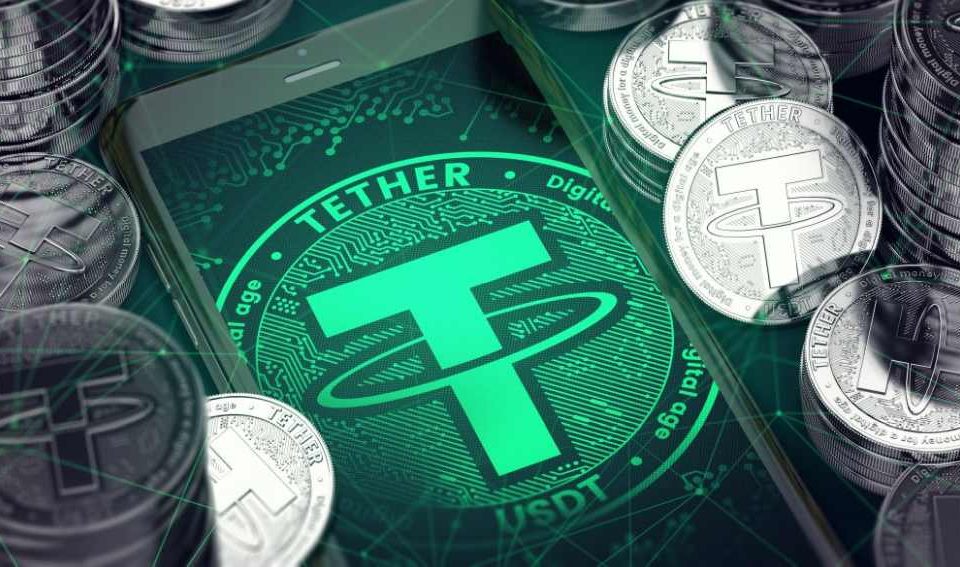“Tether’s claims that its virtual currency was fully backed by U.S. dollars at all times was a lie,” New York Attorney General’s Office says

Back in May, we wrote about the Tether scandal and Binance investigation and what they both meant for the future of bitcoin and stablecoins. Since then, bitcoin has witnessed a roller coaster ride with prices fluctuating between $35,000 to a little above $40,000.
Now, it appears the bitcoin dam is about to breached and this time around, none of Elon Musk’s tweets will save Bitcoin from the impending doom. The reason: Tether. Unknown to many crypto investors, Tether or USDT is a controversial cryptocurrency founded in 2014 and controlled by the same people who founded Bitfinex, with which it shares overlapping officers. Tether is headquartered in the British Virgin Islands, Hong Kong, Isle of Man. According to its LinkedIn profile, Tether has only 13 employees with more than $60 billion under management, makes it one of the biggest fintech startups out there.
Tether’s leadership team includes Brock Pierce, founder; JL van der Velde, CEO; Giancarlo Devasini, CFO; Stuart Hoegner, General Counsel. According to a piece on Medium, Giancarlo Devasini was fired from Microsoft in 1996 for selling pirated software. Devasini reached a plea deal to pay about 50,000 euros at today’s rate.
“But on December 3, 1996, Microsoft announced that Mr Devasini, after making a plea bargain, had decided to pay 100 million liras [50,000 euros at today rate] for having pirated software copies through Point G. On December 28, 2007, Japanese company Toshiba also sued another company of Devasini’s, Acme Srl, for violations of DVDs patents. Until 2014, Mr Devasini opened and closed about ten companies in Italy active in IT, computers, e-commerce, real estate. In those companies, he was the director, as in Perpetual Action Group in Monte Carlo.”
As of 2016, Giancarlo Devasini was also part of the leadership team at Bitfinex as you can see from this August 2, 2016 announcement on the Bitfinex website.
On the other hand, crypto startup Bitfinex was founded in December 2012 in Hong Kong by Raphael Nicolle, who later left the company in 2013 after Devasini entered it through iFinex, another company established in the British Virgin Islands. Below is how Forbes describes Devasini:
“Bitfinex’s co-founders are Raphael Nicolle, who says he has moved on to pastures new, leaving Bitfinex “in the capable hands of a good team of investors and experts”, and Giancarlo Devasini, currently listed as Risk Manager.”
Surprisingly, what most people don’t realize is that about 80% of all bitcoin trades pass through Tether. Another piece on Hacker News about Tether manipulating the price of Bitcoin estimated that 80% of bitcoin purchases originated from Tether.
So, what Tether has to do with Bitcoin? Crypto day traders typically use Stablecoins as safe haven by shifting their unstable tokens to safe real currencies (like the dollar) because wild market fluctuations make it unsafe to hold. Unlike regular cryptocurrencies like Bitcoin and Ether, stablecoins are cryptocurrencies without volatility.
According to archive information from the Tether website, 1 Tether equals one dollar and each token was backed by one United States dollar, thereby maintaining $1.00 in reserves for each tether token issued. But on 14 March 2019, Tether changed the backing to include loans to affiliate companies. In another piece on Forbes, Frances Coppola wrote in an article titled, “Tether’s U.S. Dollar Peg Is No Longer Credible” saying:
“Crypto enthusiasts will tell you that holding USDT (“Tethers”) is the same as holding dollars. But now, Tether, the issuer of USDT, has now admitted that Tethers are not 100% backed by actual dollars. The peg is no longer credible. And Tether itself has morphed into something all too familiar.”
Since then, Bitfinex has been under investigation by the New York Attorney General for abusive financial intermediation.
Fast forward two years later, the final hammer finally dropped on Tether and Bitfinex. On February 23, the New York Attorney General’s Office announced that “Bitfinex and Tether deceived clients and market by overstating reserves and hid approximately $850 million in losses around the globe.”
The New York Attorney General’s Office said that “Tether’s claims that its virtual currency was fully backed by U.S. dollars at all times was a lie.” Below is how The New York Attorney General’s Office described Bitfinex and Tether’s illegal activities:
“Bitfinex and Tether recklessly and unlawfully covered-up massive financial losses to keep their scheme going and protect their bottom lines,” said Attorney General James. “Tether’s claims that its virtual currency was fully backed by U.S. dollars at all times was a lie. These companies obscured the true risk investors faced and were operated by unlicensed and unregulated individuals and entities dealing in the darkest corners of the financial system.”
The New York Attorney General’s Office continued:
“This resolution makes clear that those trading virtual currencies in New York state who think they can avoid our laws cannot and will not. Last week, we sued to shut down Coinseed for its fraudulent conduct. This week, we’re taking action to end Bitfinex and Tether’s illegal activities in New York. These legal actions send a clear message that we will stand up to corporate greed whether it comes out of a traditional bank, a virtual currency trading platform, or any other type of financial institution.”
Both Tether and Bitfinex finally reached a plea deal with the State of New York. As part of the settlement, Bitfinex and Tether paid an $18.5 million dollar fine and penalties to the State of New York. The two companies also agreed to provide quarterly breakdowns of their reserves as part of the settlement. Bitfinex and Tether are also banned from continuing illegal activities in New York.
To fulfill the other part of the settlement, in May, Tether published its first reserve breakdown showing that 49% of its tokens are backed by unspecified commercial paper. Instead of having 100% cash as the company originally stated, the new breakdown shows 3.87% in cash.

The breakdown shows that Tether’s reserves as of March 31, 2021, were composed of 75.85% cash and equivalents, 12.55% secured loans, 9.96% in corporate bonds and precious metals, and 1.64% in other investments, including digital currencies. The cash section was further broken out into: 65.39% commercial paper (unsecured debt), 24.2% fiduciary deposits, 3.87% cash, 3.6% reverse repo notes, and 2.94% Treasury bills.
So, what’s the implication of this revelation to the future of Tether and bitcoin? Crypto investors may say that Tether’s $60 billion is a drop in bucket in a $1.5 trillion crypto market. However, given Tether’s role as the number one medium of exchange for crypto buyers and sellers, its collapse or the disappearance of its liquidity could send shockwaves to the entire crypto market. Your thoughts? Chime in and let us know what you think.
Below is a video that explains what is going with Tether and how it could ripple to bitcoin.
Below is the rest of the announcement from The New York Attorney’s Office.
A Stablecoin Without Stability – Tethers Weren’t Fully Backed At All Times
The OAG’s investigation found that, starting no later than mid-2017, Tether had no access to banking, anywhere in the world, and so for periods of time held no reserves to back tethers in circulation at the rate of one dollar for every tether, contrary to its representations. In the face of persistent questions about whether the company actually held sufficient funds, Tether published a self-proclaimed ‘verification’ of its cash reserves, in 2017, that it characterized as “a good faith effort on our behalf to provide an interim analysis of our cash position.” In reality, however, the cash ostensibly backing tethers had only been placed in Tether’s account as of the very morning of the company’s ‘verification.’
On November 1, 2018, Tether publicized another self-proclaimed ‘verification’ of its cash reserve; this time at Deltec Bank & Trust Ltd. of the Bahamas. The announcement linked to a letter dated November 1, 2018, which stated that tethers were fully backed by cash, at one dollar for every one tether. However, the very next day, on November 2, 2018, Tether began to transfer funds out of its account, ultimately moving hundreds of millions of dollars from Tether’s bank accounts to Bitfinex’s accounts. And so, as of November 2, 2018 — one day after their latest ‘verification’ — tethers were again no longer backed one-to-one by U.S. dollars in a Tether bank account.
As of today, Tether represents that over 34 billion tethers have been issued and are outstanding and traded in the market.
When No Bank Backs You, Turn to Shady Entities — Bitfinex Hid Massive Losses
In 2017 and 2018, Bitfinex began to increasingly rely on third-party “payment processors” to handle customer deposits and withdrawals from the Bitfinex trading platform. In 2018, while attempting to “move money [more] efficiently,” Bitfinex suffered a massive and undisclosed loss of funds because of its relationship with a purportedly Panama-based entity known as “Crypto Capital Corp.” Bitfinex responded to pervasive public reports of liquidity problems by misleading the market and its own clients. On October 7, 2018, Bitfinex claimed to “not entirely understand the arguments that purport to show us insolvent,” when, for months, its executives had been pleading with Crypto Capital to return almost a billion dollars in assets.
On April 26, 2019 — after the OAG revealed in court documents that approximately $850 million had gone missing and that Bitfinex and Tether had been misleading their clients — the company issued a false statement that “we have been informed that these Crypto Capital amounts are not lost but have been, in fact, seized and safeguarded.” The reality, however, was that Bitfinex did not, in fact, know the whereabouts of all of the customer funds held by Crypto Capital, and so had no such assurance to make.
The OAG Investigation Shines a Light on Unlawful Trading in New York State
From the beginning of its interaction with the OAG, iFinex and Tether falsely claimed that they did not allow trading activity by New Yorkers. The OAG investigation determined that to be untrue and that the companies have operated for years as unlicensed and unregulated entities, illegally trading virtual currencies in the state of New York.
In April 2019, the OAG sought and obtained an injunction against further transfers of assets between and among Bitfinex and Tether, which are owned and controlled by the same small group of individuals. That action — under Section 354 of New York’s Martin Act — ultimately led to a July 2020 decision by the New York State Appellate Division of the Supreme Court, First Department, holding that:
- Bitfinex and Tether — and other virtual currency trading platforms and cryptocurrencies operating from various locations around the world — are still subject to OAG jurisdiction if doing business in New York;
- The stablecoin “tether” and other virtual currencies were “commodities” under section 352 of the Martin Act, and noted that virtual currencies may also constitute securities under the act; and
- The OAG had established the factual predicate necessary to uphold the injunction and require production of documents and information relevant to its investigation in advance of the filing of a formal suit.
Bitfinex and Tether Banned from Continuing Illegal Activities in New York
Today’s agreement requires Bitfinex and Tether to discontinue any trading activity with New Yorkers. In addition, these companies must submit regular reports to the OAG to ensure compliance with this prohibition.
Further, the companies must submit to mandatory reporting on core business functions. Specifically, both Bitfinex and Tether will need to report, on a quarterly basis, that they are properly segregating corporate and client accounts, including segregation of government-issued and virtual currency trading accounts by company executives, as well as submit to mandatory reporting regarding transfers of assets between and among Bitfinex and Tether entities. Additionally, Tether must offer public disclosures, by category, of the assets backing tethers, including disclosure of any loans or receivables to or from affiliated entities. The companies will also provide greater transparency and mandatory reporting regarding the use of non-bank “payment processors” or other entities used to transmit client funds.
Finally, Bitfinex and Tether will be required to pay $18.5 million in penalties to the state of New York.
In September 2018, the OAG issued its Virtual Markets Integrity Initiative Report, which highlighted the “substantial potential for conflicts between the interests” of virtual currency trading platforms, insiders, and issuers. Bitfinex was one of the trading platforms examined in the report.




